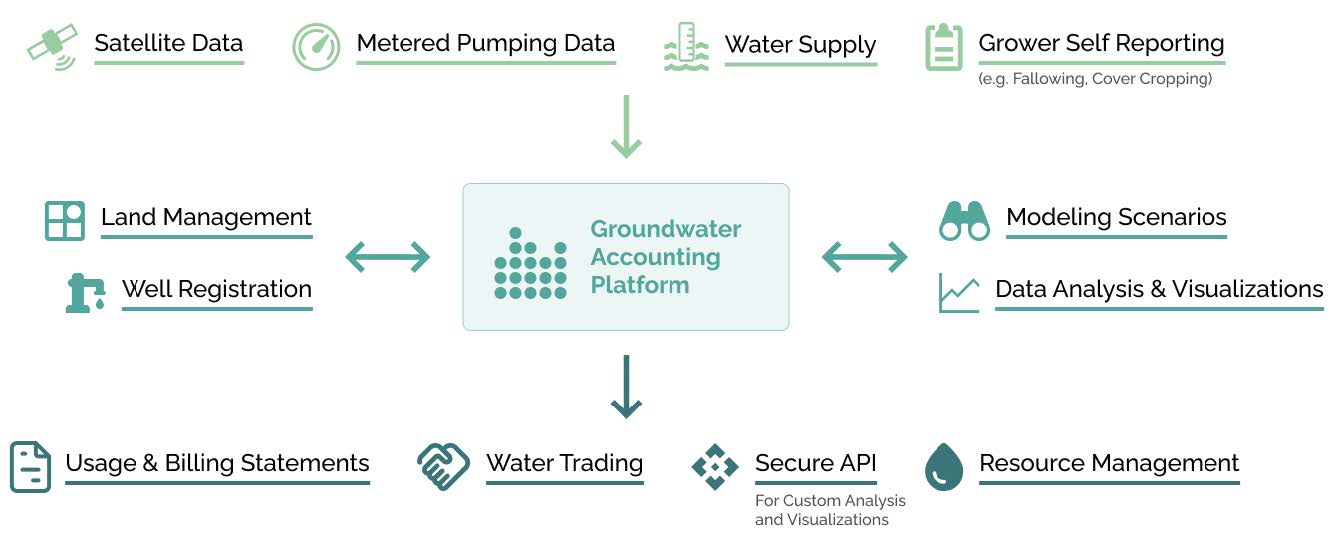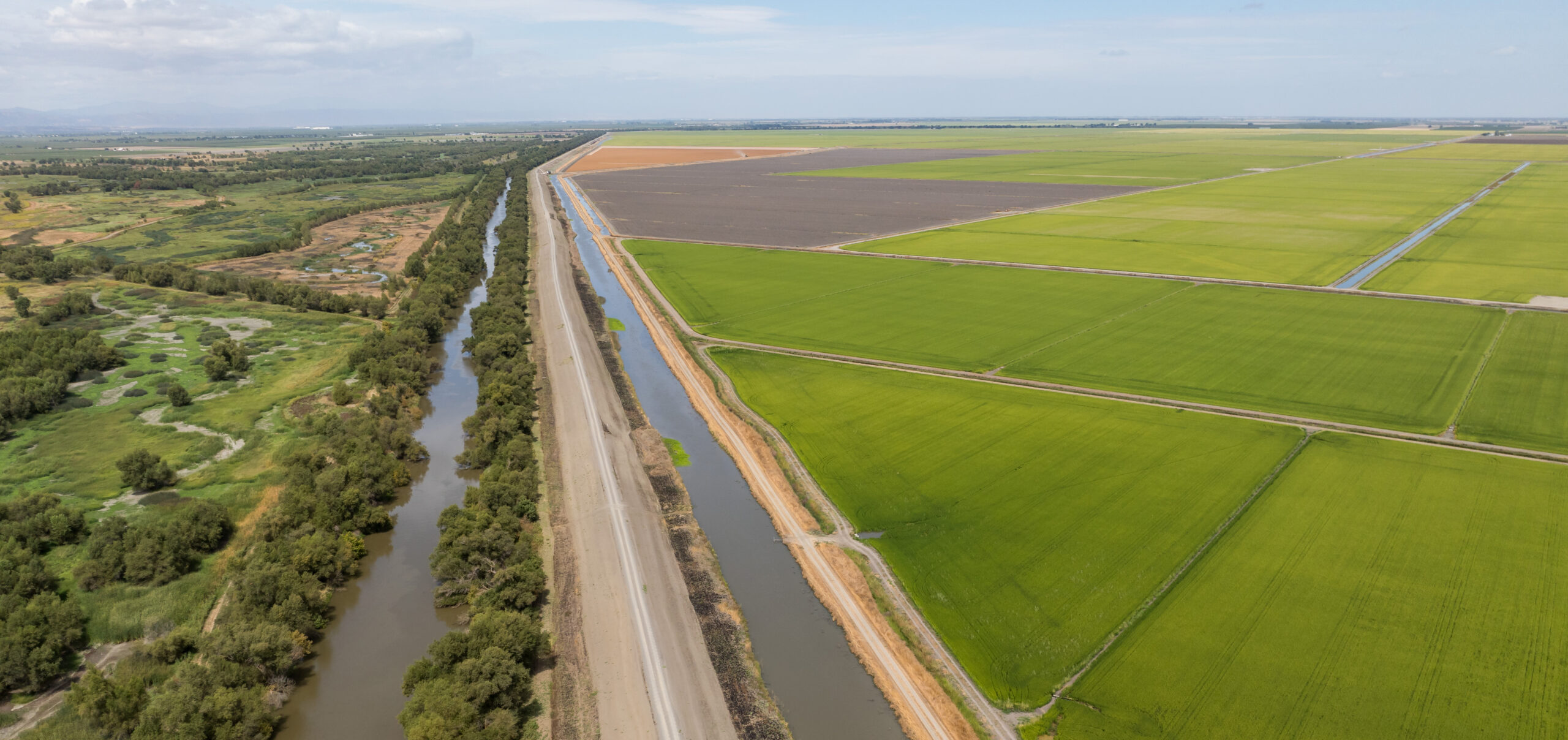Building on momentum from September’s Groundwater Accounting Platform Showcase, ESA, the California Water Data Consortium, Environmental Defense Fund, and Olsson have released a new white paper documenting how the California Department of Water Resources’ (DWR) investment in open-source groundwater tools is accelerating implementation of the Sustainable Groundwater Management Act (SGMA) across diverse basins in the state.
As Groundwater Sustainability Agencies (GSAs) transition from SGMA planning to implementation, they face several common challenges: how to make complex water data accessible to growers, how to build trust while introducing new policies, and how to avoid reinventing tools that other agencies have already developed. “Groundwater Accounting Platform — Real-World Impact from DWR Investment in Open, Scalable SGMA Tools” provides concrete solutions drawn from six diverse pilot deployments spanning different basin types, governance structures, and management priorities.
Real-World Solutions to SGMA Implementation Challenges
The pilots showed how public investment in shared, open-source infrastructure can spark scalable, lasting impact. Through DWR’s pilot program, agencies across California configured the Groundwater Accounting Platform (Platform) to fit their specific priorities and needs. The white paper features the experiences of the Merced Irrigation-Urban GSA, Merced Subbasin GSA, East Turlock Subbasin GSA, Rosedale-Rio Bravo Water Storage District, Yolo County Flood Control and Water Conservation District, and Pajaro Valley Water Management Agency.
“The Platform integrates key elements of the GSA’s programs. It’s become a practical, day-to-day system that supports decision-making at all levels, transparency, and strong relationships,” said Mike Tietze, General Manager of East Turlock Subbasin GSA.
Key findings documented in the white paper include:
- Flexible Tools for Local Priorities: The Platform’s modular design enabled agencies to customize for their specific contexts, from evapotranspiration (ET)-based tracking to metered data, well registration modules to Proposition 218 fee calculators, and multi-benefit land repurposing scenario planning.
- Growing a Community of Practice: User and advisory groups created forums where agencies troubleshoot policy rollouts, share lessons learned, and build on one another’s work—accelerating timelines and avoiding duplicated effort.
- Enabling Action and Collaboration: By making relevant data accessible and digestible, the Platform helped GSAs move from policymaking to implementing the projects and management actions identified in their Groundwater Sustainability Plans, while fostering more constructive conversations with communities.
- Unlocking Unexpected Benefits: GSAs discovered creative applications beyond water accounting, including tracking land fallowing and cover crop practices, estimating groundwater use fees, streamlining parcel-based tax assessments, automating well log data extraction, and exploring scenarios for multi-benefit land repurposing.
Operational Tools That Build Trust
The white paper outlines how agencies use the Platform not just for water accounting, but also as a tool to build trust with groundwater users and explore policy options. GSAs use the Platform to trial program rules, share them with impacted communities, and refine approaches before full implementation. Several agencies tested specific proposed policy changes with actual data before adoption, identifying and fixing issues early while reducing confusion and improving community engagement.

“This pilot program demonstrated that public investment can spark scalable, lasting impact,” said Hannah Ake, senior program manager at the California Water Data Consortium. “The public-private-nonprofit partnership behind the Platform proved to be an effective model to coordinate state investment with local expertise and private sector technical capacity.”
The Platform is now operational across multiple California basins and generating interest beyond the state, with agencies in Oregon, Nebraska, and Kansas exploring applications for their water challenges.
About the Groundwater Accounting Platform
Developed collaboratively by ESA, the Environmental Defense Fund, the California Water Data Consortium, and Olsson, the Groundwater Accounting Platform offers a robust, user-friendly tool for tracking water availability and use with accessible dashboards and workflows, providing water managers, growers, and landowners with essential data down to the parcel level. By integrating information from diverse data sources like satellite imagery, flow meters, and sensor networks, the Platform supports precise water budgeting and scenario planning, helping California’s Groundwater Sustainability Agencies and other partners plan and respond to fluctuating water conditions.
To learn more about the Groundwater Accounting Platform and read the white paper, visit: www.groundwateraccounting.org or reach out to ESA’s John Burns to request a demonstration.
Pictured above: A levee and agricultural irrigation canal in Colusa County. Photo by Xavier Mascareñas / California Department of Water Resources

